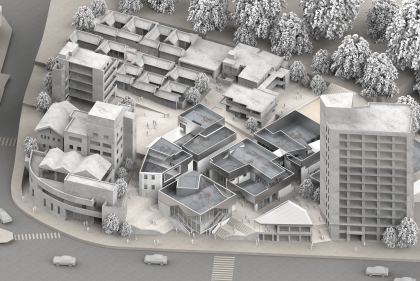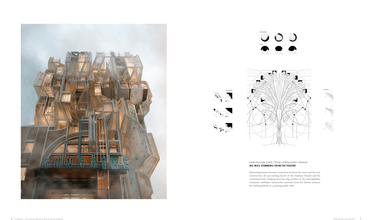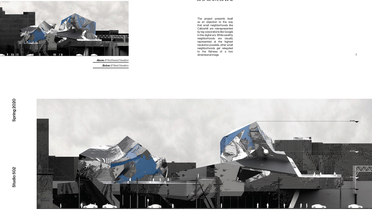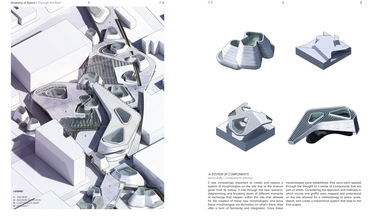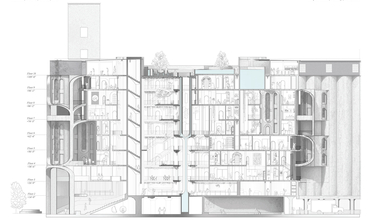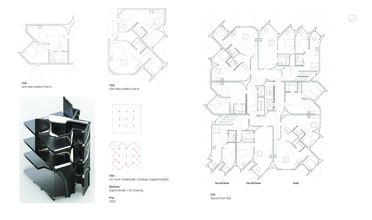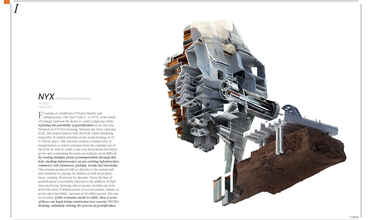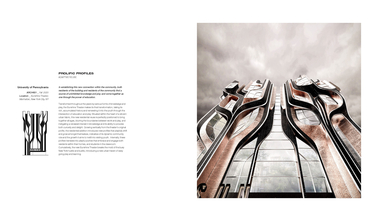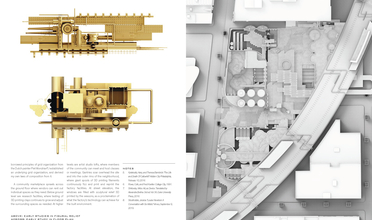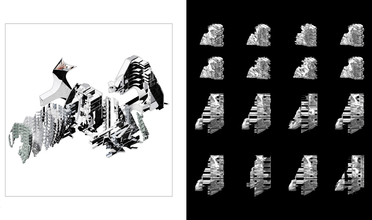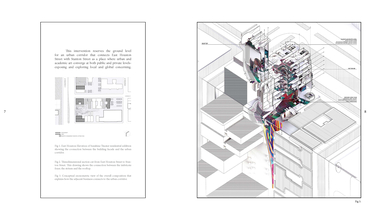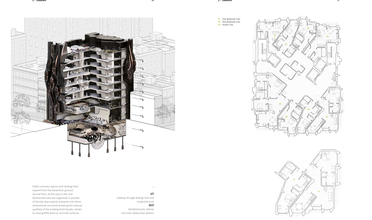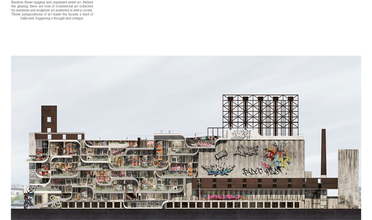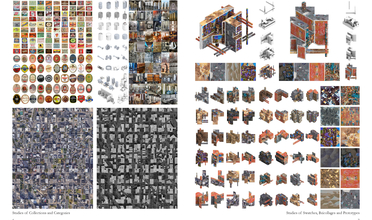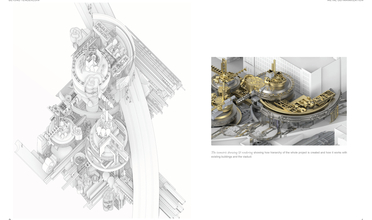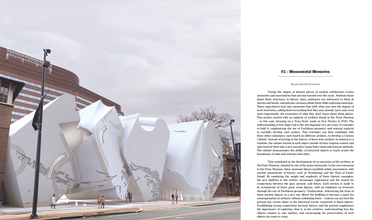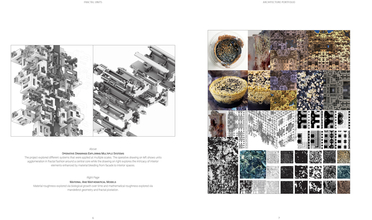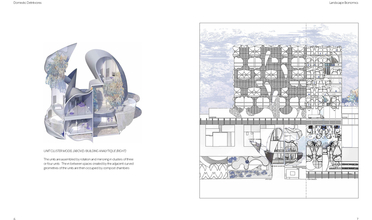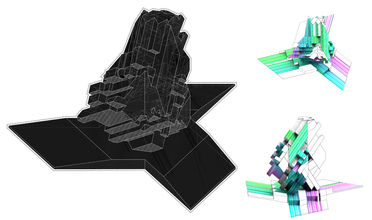The E. Lewis Dales Traveling Fellowships
The E. Lewis Dales Traveling Fellowships are awarded each year to select students of the second-year class in the Master of Architecture program for travel abroad in the summer before their final year of study. Students are selected for the Fellowship through an anonymous portfolio competition judged during the first week of the spring semester by a committee comprised of standing and core studio faculty. The Dales Fellowship enables the Department to encourage students to begin the documentation and presentation of their work, a process that is integral to the development of a design ethic and to interviewing for a job.
Jury Process
The Weitzman Architecture Faculty Jury (see list below) evaluated 67 anonymous portfolio submissions. They were asked to score each portfolio and submit short statements on what they valued while assessing each portfolio. The scores were tabulated resulting in four tiers of top scoring clusters. The 2021 Dales Fellowships will be awarded to the highest scoring submissions according to the four tiers.
Testimonials
Knowing that each student has navigated a range of diverse topics, scales, scopes and discourses in the first three core studios, I champion portfolios that curate and edit the representation of the studio work in a way that brings out the interests and strengths of the individual designer.
I especially appreciated the students who used design skills in their projects to reflect about contemporary politics, learn from struggles for justice, their inscriptions in space, and visualize radical spatial imaginations of more equitable futures.
I elevated portfolios with projects that seek to develop enticing spatial experiences through carefully crafted drawings and illustrations.
I paid close attention to sensitivity to scale in relation to context, and proper scaling for human activity. As students progressed through the curriculum, an increased understanding of structural typologies became apparent, raising questions about the integration of these typologies with the formal language.
A great portfolio is really a chance to re-present the work you’ve already done and recontextualize it; the act of laying out the portfolio should be carefully considered as an act of design, and the best portfolios of the group, rose to that level of excellence.
I was judging their abilities in representation, design and narrative.
My criteria are to look at themes which weave in and out of each student's work as an entirety, even if this consists of secondary descriptors. I also tend to commend work which takes a bit of risk, which does not look like everyone else's and is striving for individual development and impulse
I had three criteria and graded according to that: design skills, presentation style, and the clarity of the ideas.
What separated the top submissions from the rest were: 1. design intentionality, 2. conceptual and representational rigor, 3. compelling and clear presentation, 4. high level of development of each project, 5. mastery of various representational methods.
I looked for the emergence of a clear design voice across an array of diverse studio prompts. The best portfolios have a strong hand, even when the questions posed by their critics vary.
I valued individual position or project agenda within the framework laid out by the instructor, third semester synthesis of design methods learned in the first year of studies, coherent visual narrative supported by book design and material organization, and a compelling travel statement revealing research into proposed destination or fellowship.
I try to look beyond my own aesthetic preferences and agendas when reviewing portfolios, this includes trends I may not align with. Good designs stand out regardless of their aesthetic proclivities, and bad designs have difficulty masquerading behind heavy stylistic trends.
The layouts which read as books proved much more professional. It was also noticeable where understanding how it would be viewed in pdf format was taken into account.
I read all the travel descriptions and looked for visual interests that aligned with beautiful visual work.
The synthesis of ideas is an important aspect of the evaluation, and I look for portfolios that have taken time to unify the work. The top portfolios selections frame their work within a larger architectural project.
How well are the renderings representing the atmospheric and aesthetic qualities of the design? How well is the travel proposal researched and written? Some texts read like personal travel wish-lists rather than proposals for an excursion with clear ambitions and goals. Sometimes a highly organized and straight forward structure succeeds, at other times a looser and more creative one works better. What matters is that a deliberate approach to the portfolio’s design becomes evident.
Scores were dialed up for portfolios that demonstrated: Consistent and remarkable dedication to provocative design work, a clear and compelling travel statement that relates to the student's interests as demonstrated in the portfolio, and work that investigates issues of our moment - social, political and economic - in ways that uncover new design possibilities.
A strong travel proposal combined with a mature body of work obtained the highest scores. In particular, and in order of relevance; (1) justification of travel plan according to intended research topic, (2) potential for personal growth, (3) portfolio quality demonstrating a unique ability for both design and research, and (4) feasibility of the trip’s itinerary.
The travel proposal is compelling, and work seems in its service. Nice work.
Strong design and graphic skills demonstrated across multiple studios, providing a window into the individual's design authorship and capabilities. Work bridges a number of scales whilst embodying design rigor throughout. Strong design and aesthetics developed across multiple different projects. Excellent attention to detail at multiple scales from 3d facades to building composition and all project 2d drawings.
Weitzman Architecture Department Faculty Jury
Masoud Akbarzadeh, Maya Alam, Dorit Aviv, Daniel Barber, Gisela Baurmann, Miroslava Brooks, Jonas Coersmeier, Brian De Luna, Winka Dubbeldam, Scott Erdy, Homa Farjadi, Annette Fierro, Richard Garber, Nate Hume, Hina Jamelle, Vanessa Keith, Simon Kim, Ferda Kolatan, Andrew Lucia, Daniel Markiewicz, Larry Mitnick, Laia Mogas Soldevila, Brian Phillips, Eduardo Rega, Andrew Saunders, Robert Stuart-Smith, Marion Weiss, Richard Wesley, Danielle Willems
